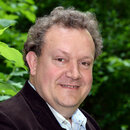Environments as learning opportunities

Brief description:
Objective of the project is to study the emergence and execution of interests of children in the age group to 12 years (hobbies as well as what they think about), the relationship between these interests and learning processes (acquisition of knowledge and practical abilities) and the influence of interests on how they live and how they want to live in the future. One important question concerns the existing resp. possible connections between subjects and activities of school and those of leisure time.
According to this objective the project “Environments as learning opportunities” deals with the following questions
in different regions with different social infrastructure:
- Which interests (leisure activities; what they think about) do children have in this age?
- How do the interests of children come about? (meaning of social context; influence of school)
- Does there exist a connection between certain interest profiles and social infrastructures?
- To what extent can children implement their interests in their environments? (recreational offers; school; promotion by adults)
- How do interests influence the use of media and infrastructure facilities, the acquisition of knowledge and practical abilities, social contacts and social skills, the self organization of the child resp. how they live and how they want to live in the future?
- Which connections exist between topics and activities of leisure time and subjects and activities of school? (past experiences of children; knowledge of teachers about interests of children; opinions of teachers about the educational value of these interests; possibilities of pupils’ participation concerning subjects of lessons)
As mentioned before the study focuses on school children of grade 4,5 and 6. Furthermore parents of these children and qualified staff members of schools and leisure facilities will be interviewed.
The study is based upon a combination of qualitative and quantitative questioning methods:
Group discussions with children as well as discussions and interviews with adults
Case studies with selected children (interviews; visit of the child’s environment)
Questioning of children and their parents by means of a standardized questionnaire
Results of the study will be summarized in a final report as well as in a book publication. Besides a detailed description of results concerning the above mentioned questions these publications will contain an elaborate discussion about possible educational consequences both for leisure time and school.


